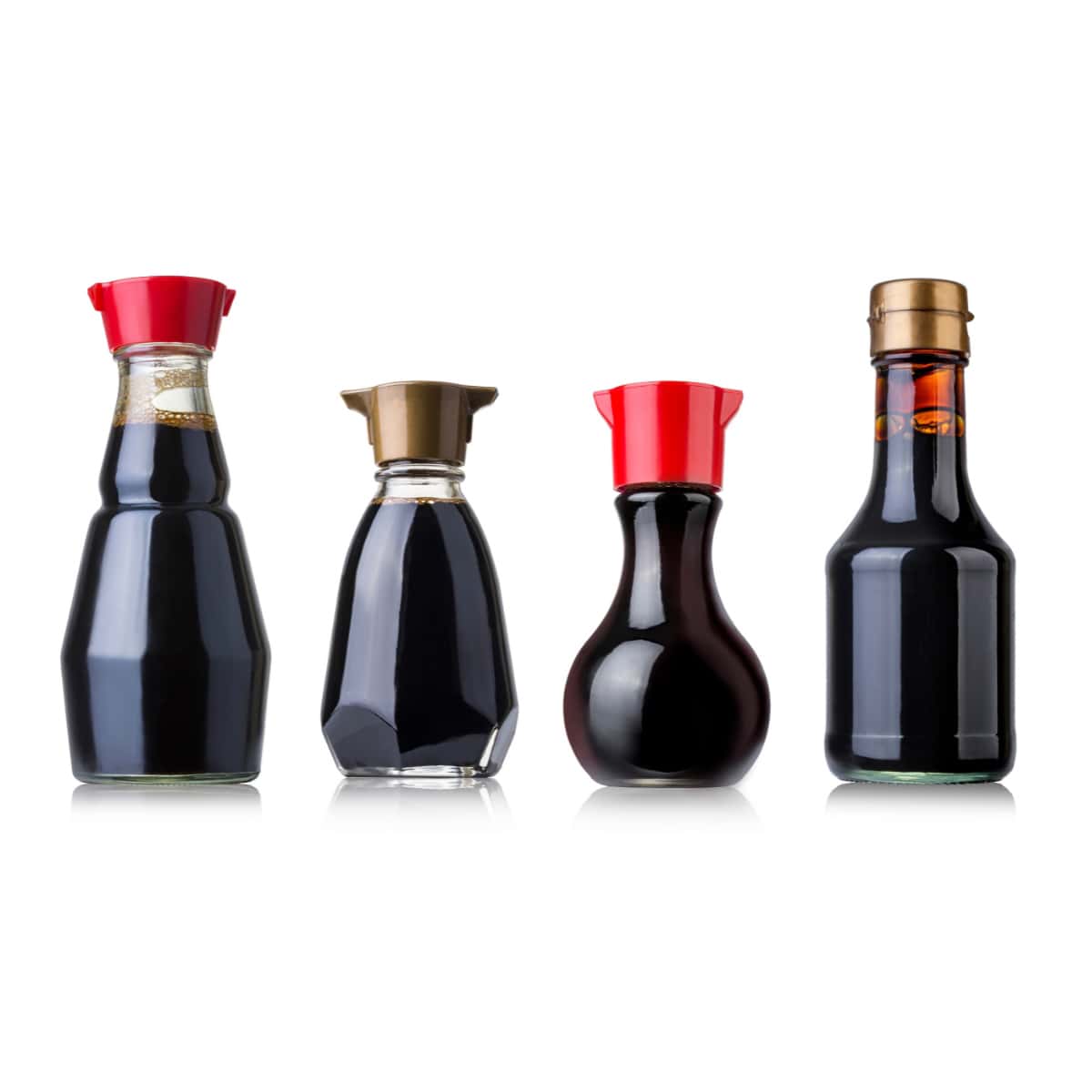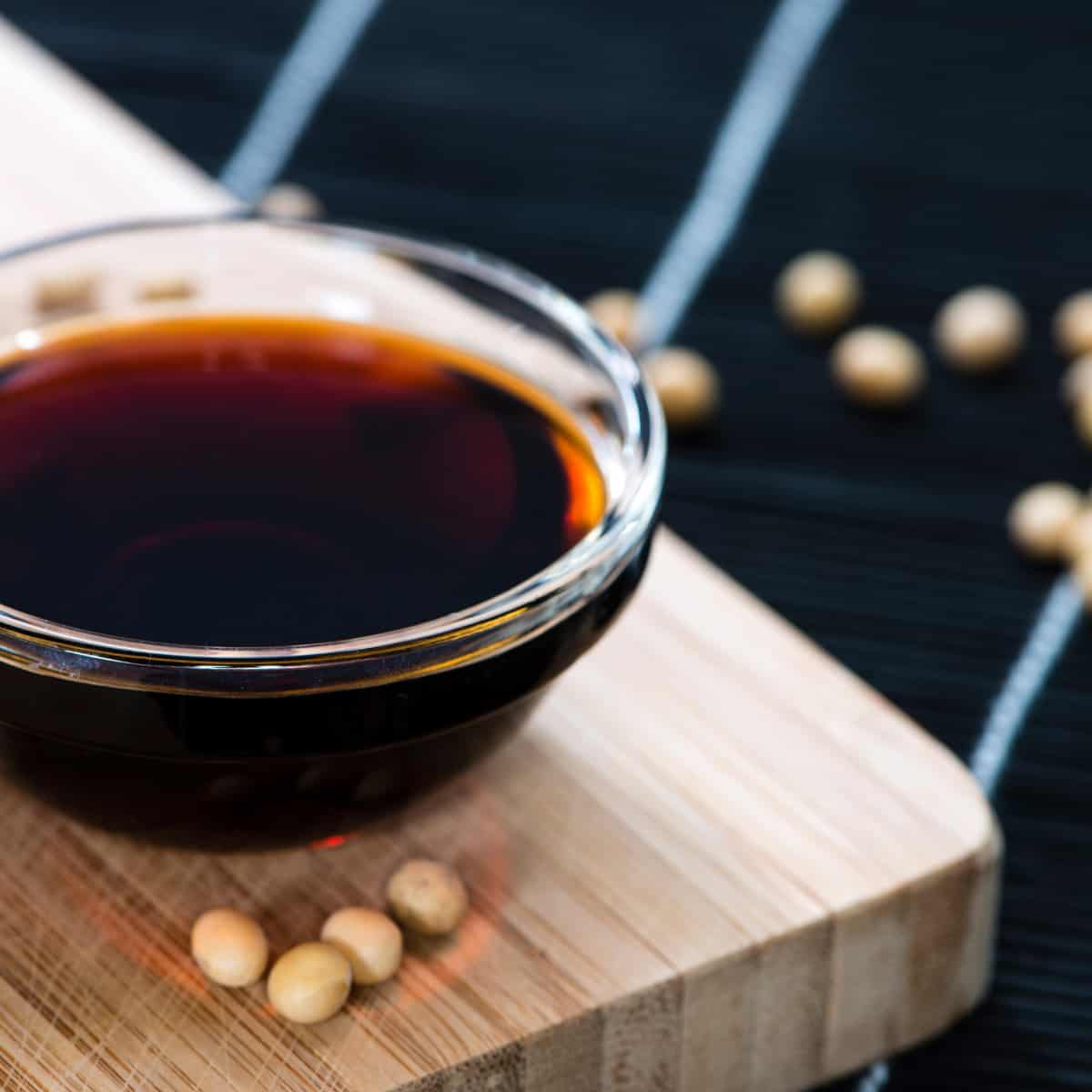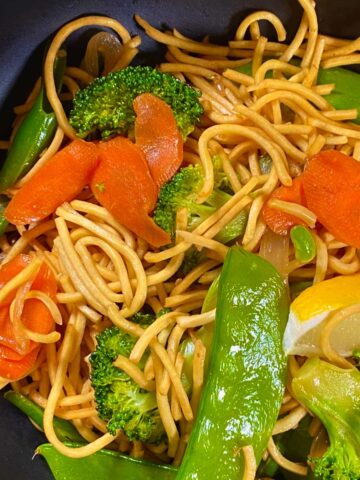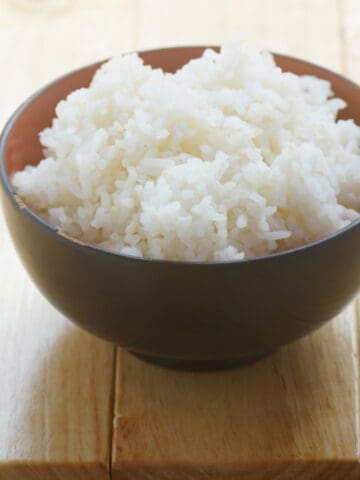Are you looking for a substitute for soy sauce that's just as tasty and versatile? We've got two fantastic options for you: coconut aminos and liquid aminos. These delicious soy sauce alternatives not only pack a punch of flavor but also offer some health benefits. Let's dive deep into understanding these soy sauce substitutes, their differences, and how they measure up against traditional soy sauce.
For many, soy sauce is a popular ingredient and an irreplaceable staple in the culinary world, especially in the umami flavor of Asian cooking. Yet, dietary needs, health concerns, and personal preferences steer many toward exploring soy sauce substitutes such as coconut aminos and liquid aminos. Let's get to know these two soy sauce alternatives and try some of my recipes that use soy sauce and substitute using a 1:1 ratio of coconut aminos or liquid aminos.
Jump to:
Understanding the Alternatives
Coconut Aminos: A unique concoction made from coconut sap combined with sea salt. It offers a slightly sweet and salty flavor and is gaining popularity in health food circles.
Liquid Aminos: This soy-derived liquid condiment results from the fermentation process of non-GMO soybeans and water, producing free amino acids. Bragg liquid aminos is a standout brand in this category, renowned for its quality and savory taste.

Health Benefits and Concerns
Sodium Concerns: A significant health worry with regular soy sauce is its high amount of sodium. Coconut aminos shine here, having less sodium content compared to traditional soy sauce. Liquid aminos, while reduced, still contain more sodium than coconut aminos but less than many soy sauces on the market.
Amino Acid Profile: Liquid aminos are enriched with both essential and non-essential amino acids, pivotal for various bodily functions, from muscle building to cellular communications.
Preservation & Purity: Both coconut aminos and liquid aminos sidestep the inclusion of chemical preservatives such as sodium benzoate, opting for natural preservation methods.
Dietary Considerations: Coconut aminos come to the rescue for those allergic to soy or adhering to a paleo diet, offering a soy-free and gluten-free alternative. Liquid aminos, though soy-based, are a gluten-free solution, perfect for those who are on a gluten-free diet but fine with soy.
Heart Health Considerations: High sodium intake is linked to elevated blood pressure and increased risk of heart disease. Using alternatives like coconut aminos or liquid aminos can aid in reducing these potential threats.
Taste Profiles and Culinary Uses
Coconut Aminos: Presenting a delightful balance of sweet and salty tones due to inherent coconut sugar, coconut aminos are adaptable and find their place in salad dressings, dipping sauces, and diverse Asian dishes.
Liquid Aminos: With a depth resonating closer to dark soy sauce, it offers a robust umami flavor. It's cherished by those who yearn for a similar taste reminiscent of traditional soy sauce but with lower sodium.
Comparing the Two
Dietary Choices: Coconut aminos, being devoid of soy, are the go-to for those with soy allergy or strict paleo enthusiasts. However, if gluten is the only concern, liquid aminos, even being soy-derived, work splendidly.
Flavor Decisions: For those who seek a similar taste to traditional soy sauce, liquid aminos might be more up their alley. However, for an innovative sweet-salty blend, coconut aminos stand out.
Health Prioritization: If reducing sodium intake is paramount, coconut aminos generally take the lead.
Both alternatives present healthier choices compared to most standard and even some low-sodium soy sauces, circumventing common food sensitivities and chemical additives.

FAQ
Coconut aminos is a savory, slightly sweet seasoning made from the coconut tree sap. It's naturally gluten-free, soy-free, and suitable for those following paleo or keto diets. The process involves fermenting the sap with salt to create this unique liquid condiment.
Coconut aminos have a rich umami flavor similar to soy sauce but with milder saltiness and subtle sweetness. Some people even claim it has hints of caramel-like notes! Though they share similarities in taste, coconut aminos bring their own distinct profile to your dishes.
Absolutely! Liquid Aminos are another great substitute for soy sauce that can be used interchangeably in recipes. They're derived from non-GMO soybeans through the process of acid hydrolysis, breaking down proteins into amino acids resulting in this flavorful liquid.
Both coconut and liquid aminos offer some health advantages over regular soy sauce. Coconut aminos contain essential amino acids and minerals like potassium, magnesium, and B vitamins without any preservatives or additives. Liquid Aminos tend to have less sodium than traditional soy sauces while still providing savory flavor.
Absolutely! Both coconut and liquid aminos work wonders as substitutes for soy sauce in almost any recipe calling for traditional soy sauce – stir-fries, marinades, dressings, or even as a dipping sauce. They add depth and complexity to your dishes, while still keeping them deliciously savory.
You can usually find these soy sauce substitutes in the condiments aisle of most grocery stores, health food stores, or online retailers. Just keep an eye out for well-known brands that offer quality products.
As the culinary world evolves, and health considerations take center stage, substitutes for soy sauce like coconut aminos and liquid aminos offer refreshing, healthier twists to age-old favorites. Each boasts its unique flavor profile and set of benefits, and the choice between them boils down to individual palate preferences and dietary needs. So, the next time you're on a grocery run, consider introducing one (or both) of these to your kitchen and embark on a flavorful journey.
Coconut Aminos vs. Liquid Aminos

Instructions
Coconut Aminos
- Made from coconut tree sap.
- Slightly sweet and salty flavor.
- Has less sodium compared to soy sauce.
- Soy-free and Gluten-free.
Liquid Aminos
- A by-product of non-GMO soybeans and water.
- Savory taste.
- Has a bit more sodium than coconut aminos, but still less than soy sauce.
- Gluten-free.
Recipes That Contain Soy Sauce
Looking for recipes that use soy sauce? Try these recipes and substitute coconut aminos and liquid aminos using a 1:1 ratio of soy sauce.
Recipes You May Like
More recipes you can try and use coconut aminos or liquid aminos as a substitute for soy sauce:



























Comments
No Comments